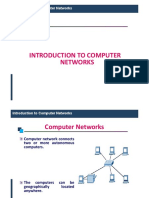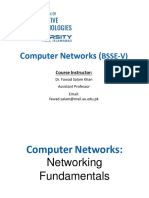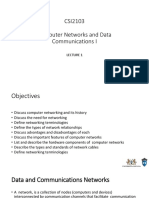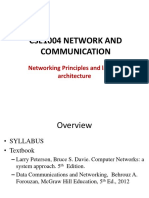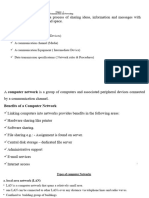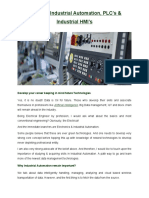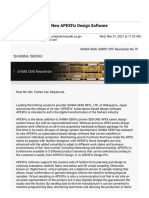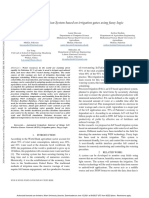0% found this document useful (0 votes)
35 views62 pagesLecture 2 - Data Comm
The document discusses various aspects of data communication and computer networks, including modes of data transmission (simplex, half-duplex, full-duplex) and types of LAN topologies (mesh, star, bus, ring). It also covers the Internet, its protocols, and components like clients, servers, and IP addresses, as well as network types such as PAN, LAN, MAN, and WAN. Additionally, it details physical communication channels, including twisted-pair, coaxial, and fiber-optic cables.
Uploaded by
lovedivine952Copyright
© © All Rights Reserved
We take content rights seriously. If you suspect this is your content, claim it here.
Available Formats
Download as PPTX, PDF, TXT or read online on Scribd
0% found this document useful (0 votes)
35 views62 pagesLecture 2 - Data Comm
The document discusses various aspects of data communication and computer networks, including modes of data transmission (simplex, half-duplex, full-duplex) and types of LAN topologies (mesh, star, bus, ring). It also covers the Internet, its protocols, and components like clients, servers, and IP addresses, as well as network types such as PAN, LAN, MAN, and WAN. Additionally, it details physical communication channels, including twisted-pair, coaxial, and fiber-optic cables.
Uploaded by
lovedivine952Copyright
© © All Rights Reserved
We take content rights seriously. If you suspect this is your content, claim it here.
Available Formats
Download as PPTX, PDF, TXT or read online on Scribd
/ 62





